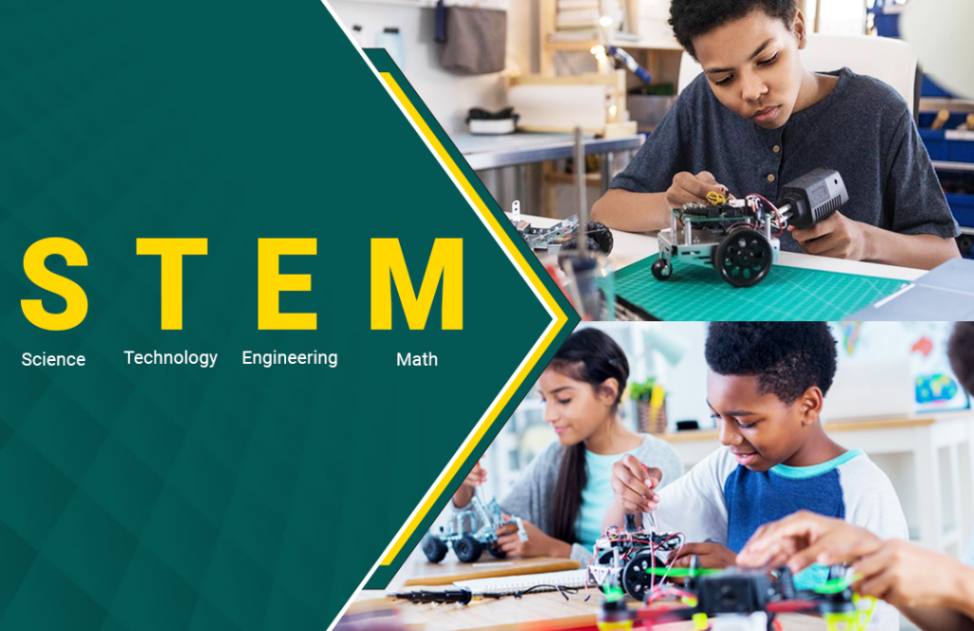Science, technology, engineering, and mathematics are all included in STEM education for students to provide a seamless learning experience. STEM promotes a multidisciplinary approach that encourages students to utilize skills and knowledge from every field to solve real-world issues, instead of separating these topics. The ultimate objective of STEM education for students is to prepare students for the possibilities and difficulties that come with surviving in a technologically advanced, interconnected world.
Benefits of STEM education for students
Practical Experience: Including hands-on activities and experiments is essential to a successful STEM education. Students are engaged and gain a deeper knowledge of theoretical topics via hands-on learning, which might take the form of science experiments, coding projects, or engineering challenges.
Project-based Approaches: Students are immersed in real-world situations when they use a project-based learning method. Students gain a deeper and more durable understanding of STEM ideas via the design and implementation of projects that allow them to apply theoretical knowledge to real-world scenarios.
Technology Integration: STEM education for students utilizes technology in the classroom which is very essential for STEM education. The use of simulations, virtual labs, and educational software improves student learning and connects them with the resources that they will need for careers in STEM fields.
Every single item in this world involves STEM (science, technology, engineering, and mathematics). As an example, let’s look at how STEM is used in the production of a car.
Science: To ensure factors like strength, safety, and durability, we must choose the best material, which requires an in-depth understanding of physics and chemistry.
Technology: One of the most recent innovations utilized to create 3D designs is the 3D printer. Prototyping and testing are carried out using virtual simulations.
Engineering: To produce a detailed model of the car, engineers employ a variety of software programs. Electrical engineering expertise is needed to design electrical systems, including the wiring, sensors, and electronic parts.
Mathematics: Engine and gearbox designs, as well as the precise speed at which a car should be driven and the speed at which it becomes unsafe, are all based on mathematical and physical concepts.
Similarly, STEM is present everywhere in our surroundings, so it is very important to make our students engage in STEM education.
For this STEMROBO is offering various kinds of labs and other resources in order to provide STEM education for students with end-to-end solutions to K-12 students.
We have customized platforms where students can engage in Hands-on learning, we set up our labs in different schools, and we also organize workshops to provide guidance to students.
We have created our in-house platform called AI Connect where students can learn coding by using a very simple yet very interesting method of Block-Based coding.
Our major objective is to get students motivated and engaged with their educational journey. To this end, we use cutting-edge technology like robotics, artificial intelligence (AI/IoT), and virtual reality headsets in place of the traditional educational system.
By using this cutting-edge method, students are encouraged to think beyond the limits of the academic program. This helps them develop their critical thinking abilities and prepares them to be future leaders and innovators.
We customize our teaching methods according to every student’s level of understanding and rate of concept learning. Since every student is unique and has various learning styles, some students are active learners (Fast learners), while others are passive learners (Slow learners). we tailor our training depending on their needs.
We also follow a unique approach that is Design Thinking Approach which involves these steps:
Recognize – Recognizing the problem or challenge to be solved
Analyse – Breaking the problem down into constituent parts and needs.
Design – Designing the solution to the problem according to the analysis.
Implement – Creating the program.
Test – Making sure that the program works and fulfills the needs.
Evaluate – Assessing how effective the solution has been along with any issues.
One important aspect of STEM education for students is about the possibilities and challenges of the future is STEM education. Through the development of critical thinking, problem-solving abilities, creativity, and teamwork, STEM education for students equips them to actively participate in a society that is changing quickly. It is a complete approach that fosters curiosity, exploration, and adaptability rather than just a collection of topics. By supporting STEM education for students, we are developing the next generation of thinkers, innovators, and problem solvers who will lead the world into undeveloped areas of knowledge and exploration in addition to forming the workforce of the future.






